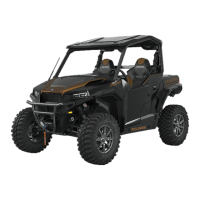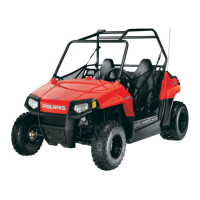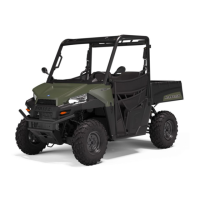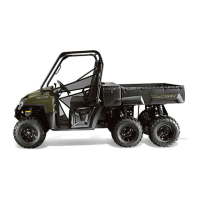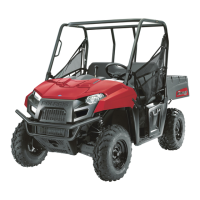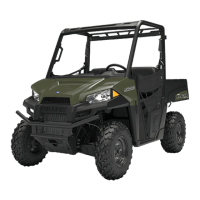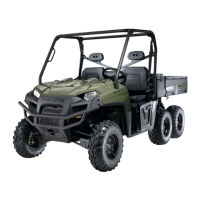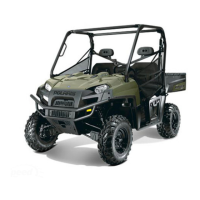TROUBLESHOOTING
DRIVE BELT WEAR/BURN
POSSIBLE CAUSE SOLUTION
Driving onto a pickup or tall
trailer in high range
Use low range during loading.
Starting out going up a steep
incline
Use low range.
Driving at low RPM or ground
speed – 3–7 mph (5 –12 km/h)
Drive at a higher speed or use low range more frequently.
Insufficient warm-up at low
ambient temperatures
Warm the engine at least 5 minutes. With the transmission in
neutral, advance the throttle to about 1/8 throttle in short bursts,
five to seven times. The belt will become more flexible and
prevent belt burning. Always warm up the belt by operating below
30 mph (48 km/h) for 1 mile (1.6 km). When the temperature is
below freezing, extend the belt warming time to 5 miles (8 km).
Slow/easy clutch engagement Use the throttle quickly and effectively.
Towing/pushing at low
RPM/low ground speed
Use low range only.
Utility use/plowing Use low range only.
Stuck in mud or snow
Shift the transmission to low range and carefully use fast,
aggressive throttle application to engage clutch.
WARNING: Excessive throttle may cause loss of control and
vehicle rollover.
Climbing over large objects
from a stopped position
Shift the transmission to low range and carefully use fast, brief,
aggressive throttle application to engage clutch.
WARNING: Excessive throttle may cause loss of control and
vehicle rollover.
Belt slippage from water or
snow ingestion into the PVT
system
Dry out the PVT. See PVT Drying procedure. Prevent water from
entering the PVT intake duct. See Intake Pre-Filters for more
information. Inspect clutch seals for damage if repeated leaking
occurs.
Clutch malfunction An authorized dealer can assist.
Poor engine performance
Check for clogged air filter, clogged fuel filter, water in the fuel or
foreign material in fuel tank or fuel lines. An authorized dealer can
assist.
Wrong belt
Install the recommended belt.
Improper break-in
Always break in a new belt and/or clutch. See PVT Break-in
procedure.
147
TROUBLESHOOTING
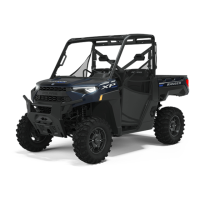
